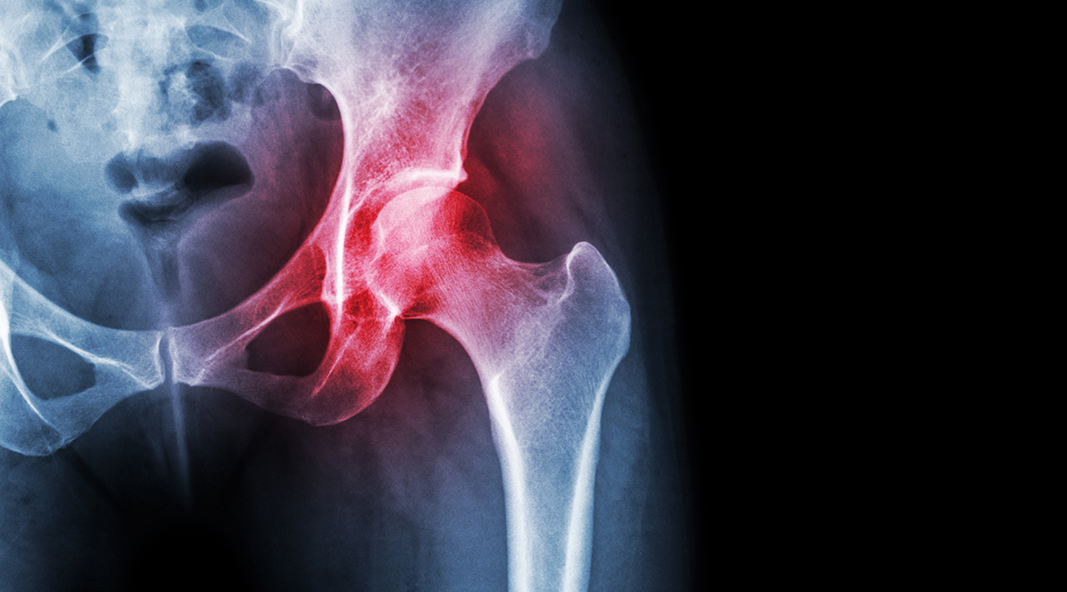
Injury Overview
A condition of the hip which can affect recreational and professional athletes alike is internal snapping hip syndrome. This syndrome is marked by snapping of the iliopsoas over the front of the hip joint. The iliopsoas is a muscle, also referred to as the hip flexor, which connects the bone in the thigh (femur) to the lumbar spine. It starts as a muscle at the lumbar spine and transitions to a tendon as it courses to its attachment on the femur. At the hip joint, there is a significant portion which is tendon and a significant portion which is still muscle. The tendon portion often runs directly over the front of the hip joint, and sometimes this tendon can create a popping sensation as it moves across the hip joint. Some patients describe this popping as their hip popping out of joint, but most often this popping represents motion of the tendon alone. In some instances, the muscle and tendon of the hip flexor can become tight and irritated (inflammed). This is often associated with groin pain and a snapping sensation which can be quite bothersome. In severe instances, a tight iliopsoas with long standing popping can lead to inflammation and/or damage of the acetabular labrum, also creating hip pain and irritation. This is condition is known as psoas impingement. Without proper treatment and rest, the labrum can become damaged to the point where it tears.
Symptoms
Internal snapping hip syndrome is a precursor to psoas impingment. Symptoms of internal snapping hip syndrome include popping located in the groin. At times the popping can be accompanied by a sharp pain. With time as the snapping progresses to psoas impingement a constant, deep ache within the groin may develop. Patients may also feel tightness along the front portion of the hip joint. Often symptoms associated with internal snapping hip syndrome and psoas impingement are increased with activities and sports.
Diagnosis
Dr. Anz obtains X-ray’s of the hip and pelvis to evaluate a given patient’s anatomy and look for abnormalities which can predispose one to hip impingement. He will obtain a comprehensive history to consider what types of activities you participate in and how they may affect your hip. He will conduct a physical examination that will evaluate the status of your hip flexor. The Thomas test is a physical examination test that will allow him to determine how tight a patient’s iliopsoas tendon/muscle is. He will also listen for any sound that the joint may make during his examination. If appropriate, he will order an MRI to assess the iliopsoas as well as the acetabular labrum.
Treatment
Upon diagnosis of psoas impingement, Dr. Anz will begin to discuss treatment options. In most situations, a patient can recover fully from impingement without the need to have surgery. Non-surgical treatment techniques which Dr. Anz will recommend include rest, the use of anti-inflammatory medications, physical therapy, and/or injection of steroids into the tendon sheath to decrease inflammation and alleviate pain. A thorough stretching and strengthening program is often the best first step to making patient’s better. A therapist is often necessary to help assist with this progress. If these treatment techniques are attempted and are not successful, Dr. Anz may begin to discuss surgery with the patient.
Surgical Treatment
If surgery is required to treat psoas impingement, Dr. Anz will perform it arthroscopically. During an arthroscopic surgery Dr. Anz will insert a camera and small surgical instruments through 2 to 3 small incisions along the hip. If FAI impingement is also involved, he will address this and any damage created at the same time. Releaseing the psoas tendon, medically known as “fractional lengthening,” involves cutting the tendon portion at the hip joint while preserving the portion which is still muscle at the hip joint. Fractional lengthening may cause some future weakness in hip flexion strength.
Post-Operative
Physical therapy is a crucial part of the healing process for patients in order to make a full recovery. A progressive rehabilitation program will be prescribed at your first post-operative visit with Dr. Anz. Initially, the therapy will focus on slowly returning motion back to the injured hip. After motion is regained, patients will follow a progressive strengthening program, and eventually, a return to normal activities.
—
If you believe you are suffering from Psoas impingement, or would like additional information on the causes of hip pain, please contact the Gulf Breeze, Florida orthopedic surgeon, Dr. Adam Anz located at the Andrews Institute.




